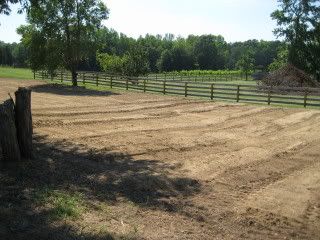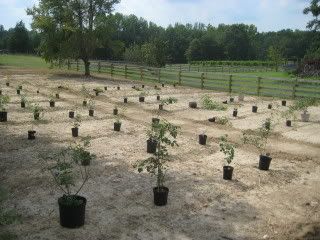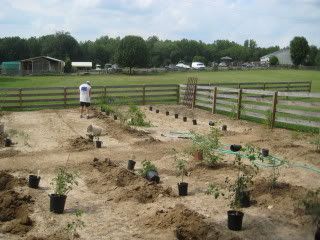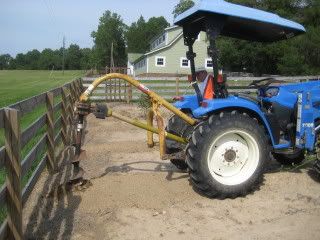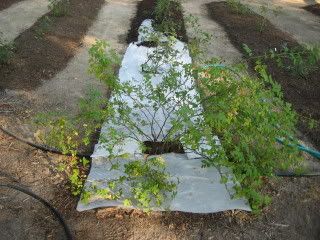It’s winter, and there isn’t much happening in the garden. It’s squishy and muddy and cold outside today. I expect this to be the situation until some time in May. To get all of us through winter, I’ll spend some time here relating how each of the gardens, and some of the house projects, began.
The Rose Field is an area beside our drain field that was once a veggie garden, but it had grown over with all sorts of weeds and brush by the time we moved here. The soil is fabulous – clay-based, in a good way, with lots of other stuff mixed in to make it easy to dig and work.
This summer, we bushhogged the brambles and honeysuckle, and sprayed everything with herbicide. My neighbor plowed, and disked, and tilled it with his tractor. We raised the rows, raked everything smooth, and waited for the weeds to sprout. Once the weeds got going, I sprayed them with herbicide.. I have learned that any disturbed earth here quickly becomes a weedy mess -- so letting the field sit for a couple of weeks and using herbicide is the best way to take care of the weeds in the until I get the mulch laid down.
Here is what the field looked like after the ground prep:
The field contains 20 rows (one for each section of fence -- 8' centers) 65' long, with a 5' aisle down the center. As we laid out the roses, we tried to have each row contain only one class of roses. This works for HPs, and Bourbons, and Noisettes (which I have tons of), but we had to mix up some of the OGRs -- I only have a few Gallicas . . . and some new hybrid Chinas . . . and only 2 mosses . . . so far.
My friend Robert came one day in August to help me start planting. After we brought the roses up from the house, and laid them out in their assigned locations, Robert started digging holes, and I followed behind him planting the roses. Even though the ground had been prepped ahead of time, this clay soil had hardened up a bit -- not too bad, Robert said, but it was hard enough to make breaking up the dirt to refill each hole a bit time consuming.
We'd been at it for about 50 roses when the neighbor came over to check out what we were doing. "Do you want me to bring my auger over and dig your holes?" he said. We had to enlarge the holes for any rose in a pot larger than a gallon, but things still went a lot faster this way.
By the end of the day, we had planted 10 rows with 98 roses -- I counted them the next morning. We were filthy and very, very tired. I cannot possibly thank Robert adequately for his help. He is a valuable resource, a tireless digger, and a benevolent task master.
I spent the next two days laying irrigation tubing and installing emitters on each rose. (Drip irrigation is the ONLY way I could do roses on this scale.) The trickiest part of the job was unrolling the 500' roll of mainline tubing by myself -- the thing is heavy, and it kept wanting to tangle as I rolled it along. Using the tubing as a guide, I now know that it's just a little over 500' from the house to the barn. :)
Mulching the rows took a lot longer than we imagined it would. We saved most of the packing paper from when we moved here, and it was perfect to use underneath the mulch -- and a good way to recycle stuff, too. The length of one sheet of the paper was the exact width of one row, so we just layered it on, tore it to fit around each rose, wet it with a hose to keep it in place, and added mulch.
There’s more to come soon – stay tuned for Part 2.
Will the REAL Birthday Boy Please Stand Up?
7 hours ago

